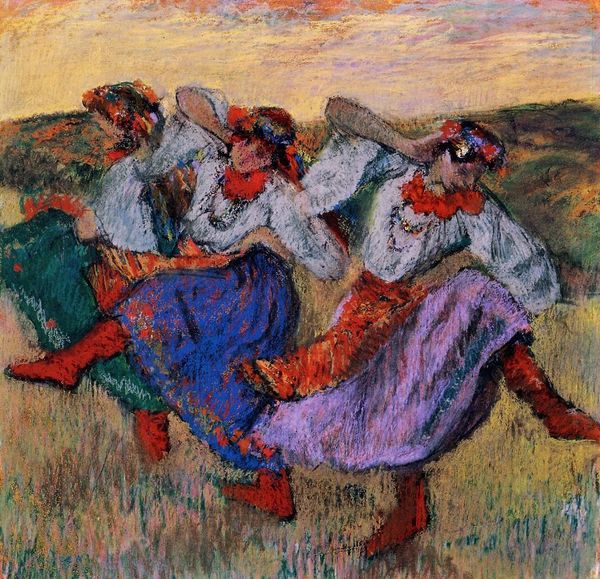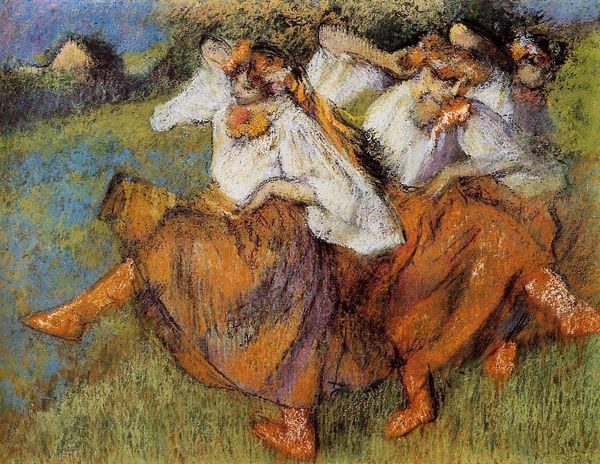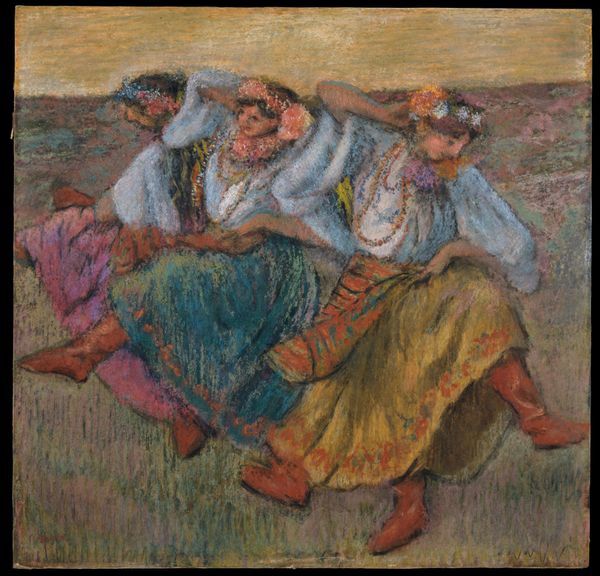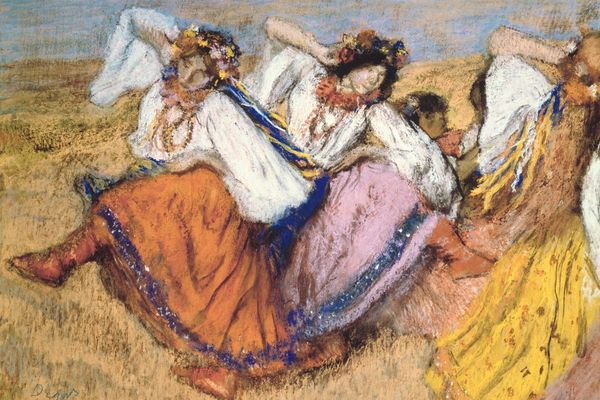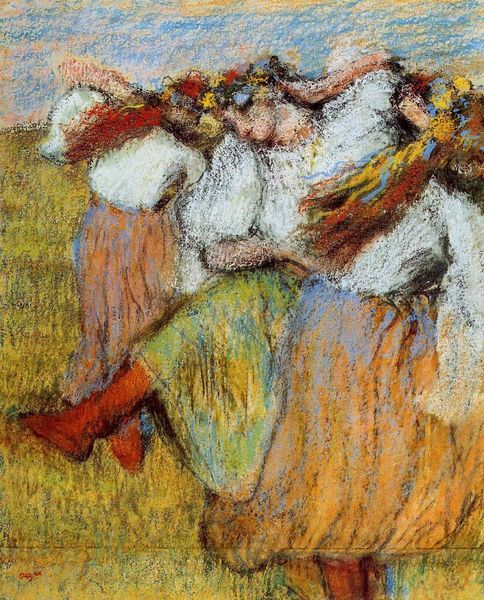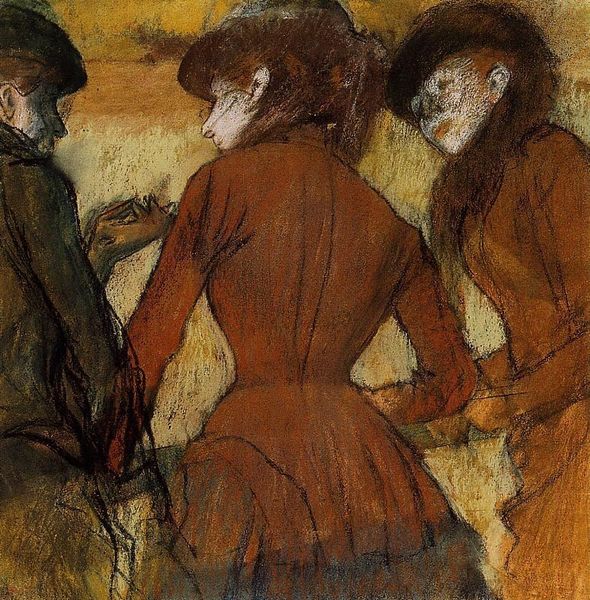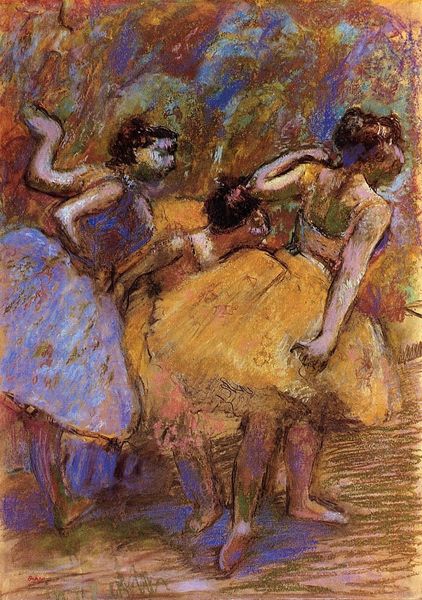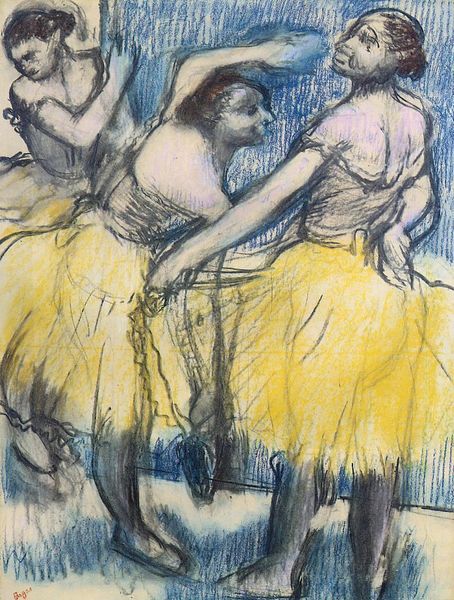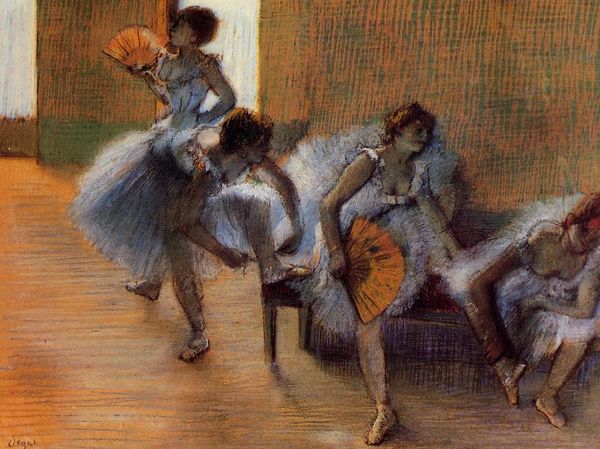
Dimensions: 63 x 53 cm
Copyright: Public domain
Editor: Here we have Edgar Degas' "Three Ukrainian Dancers," a pastel and possibly oil painting from 1895. I find the loose, almost blurry composition quite captivating, almost like a faded memory. What immediately strikes you about this piece? Curator: It is intriguing how Degas eschews crisp lines for a hazier form, isn't it? Consider the structural implications: The repetition of the dancers' poses creates a rhythmic effect, guiding the viewer's eye across the composition. Notice the earthy palette—ochres, russets, creams—how does that contribute to the overall feeling? Editor: It definitely adds to that sense of something past, or maybe fleeting. I also see a lack of distinct facial features; does that emphasize movement over individual identity, in your opinion? Curator: Precisely! Degas seems less concerned with specific details of representation and more with the visual sensation of movement itself. The lack of sharp details further dissolves the figures into the landscape, prioritizing an analysis of color, texture, and the dynamism of form over narrative. Note how the strokes of pastel themselves create texture and contribute to a sense of constant change. What effect do you think that achieves? Editor: I guess it makes the dance seem more spontaneous, like capturing a momentary feeling instead of posing for a picture. It's interesting how much can be conveyed through pure form and color! Curator: Absolutely. The formal elements work in concert to deliver that specific aesthetic and that particular meaning. Thinking purely formally lets us notice that movement, rhythm and transience become the true subjects. Editor: I hadn't considered that. Viewing the piece through this formal lens reveals a new understanding! Curator: Indeed! Paying attention to the formal devices helps open pathways into richer art viewing experience.
Comments
No comments
Be the first to comment and join the conversation on the ultimate creative platform.
